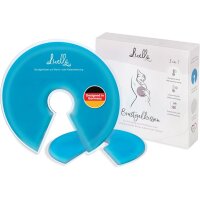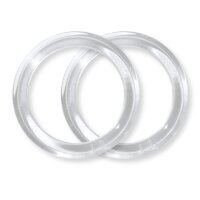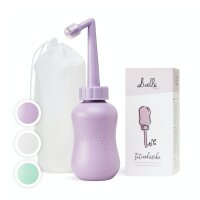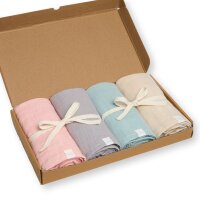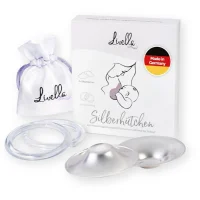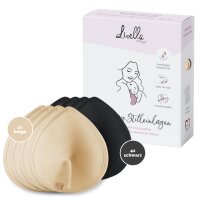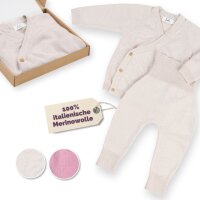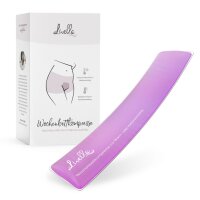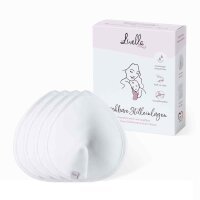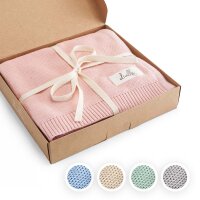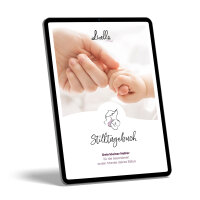The gentle touch of parents is the most comforting feeling for a baby. No wonder baby massage is so popular – it fosters closeness, security, and has a positive effect on your child’s development. It can also help relieve minor complaints like wind or restlessness.
In this article, you'll find out exactly what baby massage is, the benefits it offers, how to do it properly, and when you should be cautious.
Table of contents
What is Baby Massage and Why is it So Popular?
When Can You Start Baby Massage?
What are the Benefits of Baby Massage?
When and How Should You Give a Baby Massage?
Key Baby Massage Techniques
Which Oils and Products Are Suitable for Baby Massage?
Common Mistakes During Baby Massage – and How to Avoid Them
Baby Massage for Specific Complaints
When Should You Avoid Baby Massage?
Summary: Key Tips for a Successful Baby Massage
FAQ – Frequently Asked Questions About Baby Massage
What is Baby Massage and Why is it So Popular?
Baby massage is a conscious form of touch where you gently massage your baby using slow, intentional movements. It’s not only about physical wellbeing – massage also strengthens the emotional bond between parent and child and creates precious moments of closeness and mindfulness. Many parents report that regular massages make their babies more relaxed, balanced, and content. Especially in today’s fast-paced world, baby massage can offer a peaceful oasis in daily life.
You can read more about the importance of bonding and physical closeness here: Breastfeeding and Bonding.
When Can You Start Baby Massage?
You can usually begin gentle massages from around the third week of life, provided your baby is healthy and there were no complications during birth.
Some parents start earlier with light stroking, but very gentle handling is recommended for very small or premature babies.
Tip: Always pay attention to your baby’s signals – if they seem calm and alert, it’s a good time to start.

What are the Benefits of Baby Massage?
Baby massage has many positive effects:
-
Strengthens the parent-child bond through close contact and shared time
-
Promotes relaxation and reduces stress in babies
-
Supports digestion, particularly helpful for wind or colic
-
Improves sleep patterns through deeper relaxation
-
Encourages motor development and enhances body awareness
By the way: mindful relaxation is also important during pregnancy. Find helpful tips here: Sleep Problems During Pregnancy.
When and How Should You Give a Baby Massage?
The Best Time for Baby Massage
The ideal time is when your baby is awake and alert but not hungry or immediately after a feed. Calm parts of the day, such as after a morning nap or early evening before bedtime, work best.
Creating the Right Environment
Ensure the setting is comfortable:
-
Pleasant room temperature (around 24–26°C)
-
Soft lighting and minimal noise
-
A soft, secure surface
-
A towel, baby oil and a fresh nappy ready
How Long Should a Baby Massage Last?
Initially, 5–10 minutes is enough. As your baby grows, you can gradually extend the sessions.
Important: Quality over quantity – better short, loving massages than long ones that overwhelm your baby.
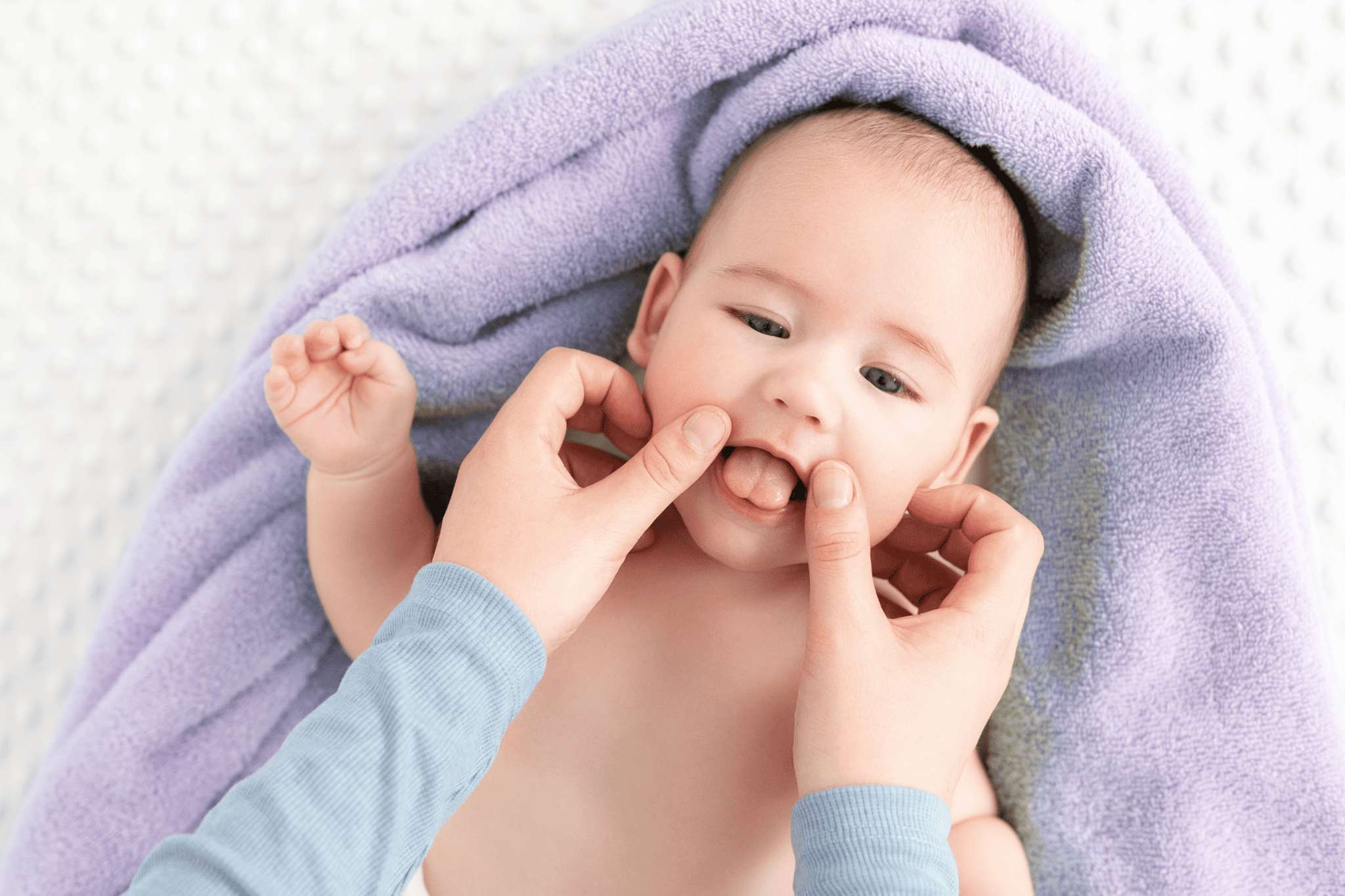
Key Baby Massage Techniques
The focus is on gentle, mindful movements. Techniques are easy to learn and can be adapted to your baby's needs.
Gentle Stroking Movements
Using slightly curved hands, stroke gently in long, smooth motions over your baby's arms, legs and back.
This technique conveys security, soothes the nervous system, and boosts circulation.
Babies particularly enjoy strokes from the shoulders to the fingertips and from the hips to the toes.
Circular Movements on the Tummy
Place your fingertips lightly on your baby’s tummy and move them in small clockwise circles.
This helps stimulate digestion, ease wind, and relieve tummy aches.
Important: Use only light pressure and avoid the navel area.
Hand and Foot Massages
Gently stroke your baby's hands and feet, making small circles on the palms and soles.
This promotes sensory awareness and relaxation.
End each hand and foot massage by softly stretching out each finger and toe.
Back Massage
Lay your baby on their tummy. With flat hands, gently stroke from the shoulders down the spine, or use small circular motions over the shoulders and lower back.
This promotes calmness, strengthens the back muscles, and enhances body awareness.
Important:
Always use gentle pressure, observe your baby’s reactions carefully, and stop if your baby shows signs of discomfort.
Which Oils and Products Are Suitable for Baby Massage?
Use natural, skin-friendly oils such as:
-
Almond oil: Very mild, nourishing and well tolerated
-
Jojoba oil: Highly protective and moisturising
-
Coconut oil: Naturally antibacterial with a pleasant scent
Choose products free from artificial fragrances, preservatives and mineral oils.
For sensitive skin, look for dermatologically tested baby oils.
Common Mistakes During Baby Massage – and How to Avoid Them
Avoid these mistakes:
-
Applying too much pressure or massaging too firmly
-
Massaging immediately after a feed
-
Overextending the session and overstimulating your baby
-
Using unsuitable skincare products
Remember: Gentleness, attentiveness and creating a calm atmosphere are key.
Baby Massage for Specific Complaints
Colic and Wind:
Circular movements on the tummy can ease digestive issues and discomfort.
Restlessness and Sleep Problems:
Gentle strokes over the back, legs and arms can help your baby settle and fall asleep more easily.
Find more advice here: Restlessness During Breastfeeding.
Growth Spurts and Teething:
During intense developmental phases, gentle massages around the shoulders and neck can provide comfort and security.
When Should You Avoid Baby Massage?
Avoid massaging your baby if:
-
They have a fever or infection
-
They have skin rashes or allergic reactions
-
They cry persistently or reject the massage
In such cases, it’s better to postpone the massage until your baby feels more comfortable.
Summary: Key Tips for a Successful Baby Massage
-
Use baby massage as a loving ritual to promote closeness, relaxation and development
-
Choose the right time and create a calming environment
-
Use high-quality, natural oils and watch your baby's signals carefully
-
Give your baby the time and space they need – every massage should be a shared moment of joy
FAQ – Frequently Asked Questions About Baby Massage
When can I start baby massage?
From around the third week of life, provided your baby is healthy and comfortable.
How often should I massage my baby?
Once or twice a week is ideal – if your baby enjoys it, you can do it more often.
What if my baby doesn’t like the massage?
Respect your baby's signals and try again another time if needed.
Which oils are best for sensitive baby skin?
High-quality almond or jojoba oil without synthetic additives are excellent choices.
Can baby massage help with sleep?
Yes, many babies fall asleep more easily and rest more deeply after a gentle massage.
References
- https://www.pampers.de/neugeborenes/schlaf/artikel/babymassage
- https://www.kartenmacherei.de/magazin/geburt/babymassage
- https://www.nivea.de/beratung/baby-kids/babymassagen
- https://www.aok.de/pk/magazin/familie/baby-kleinkind/anleitung-fuer-babymassagen-zur-entspannung/
- https://www.swissmom.ch/de/baby/babypflege/baby-massage-10378
- https://www.dak.de/dak/leistungen/schwangerschaft-geburt/nach-der-geburt/sanfte-massage-fuer-dein-baby_19902



